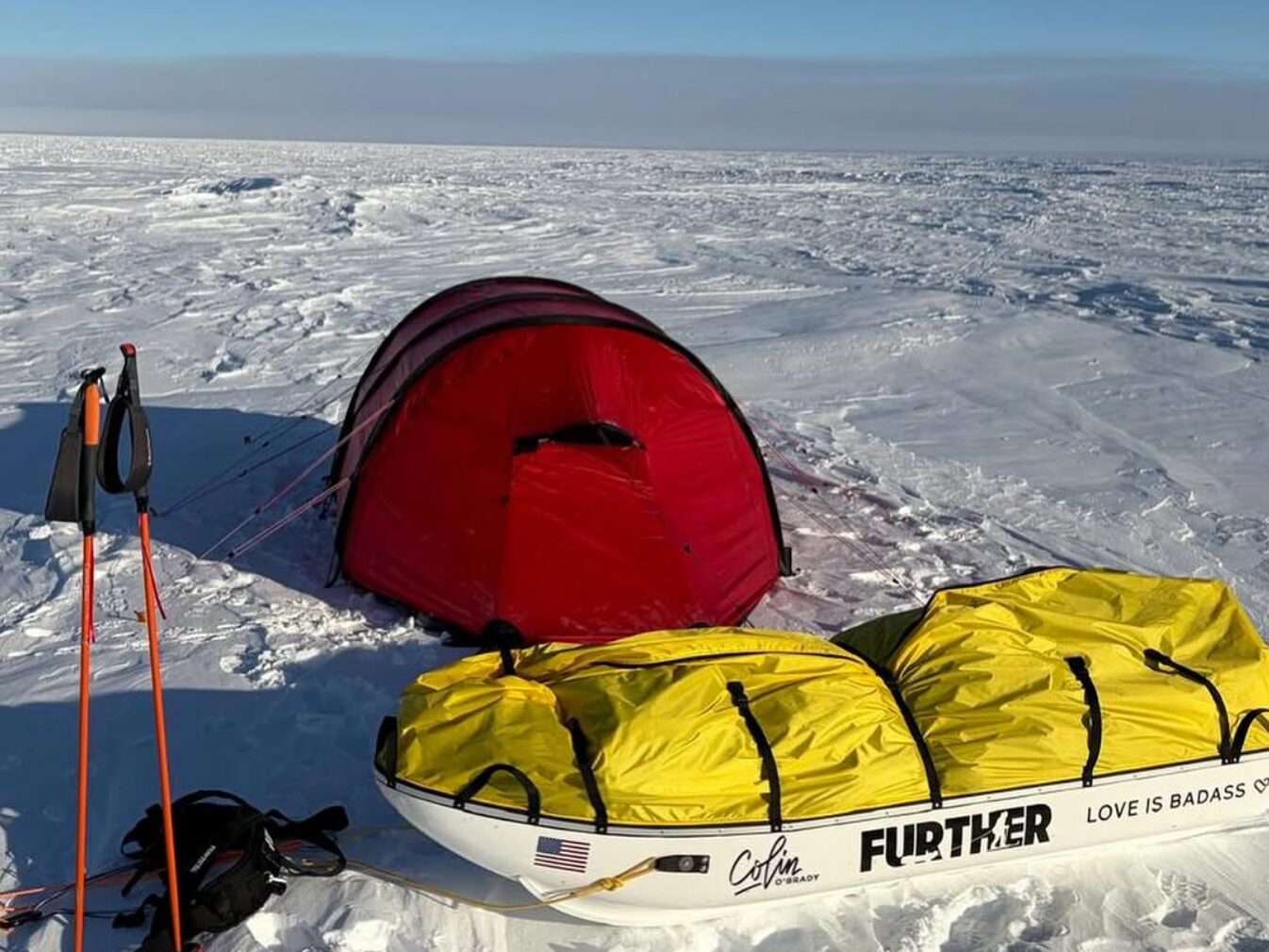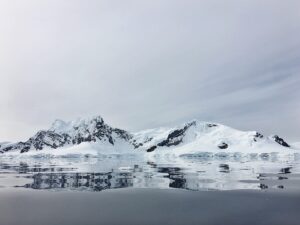As we approach the tail end of November, the 2025-26 Antarctic season is well underway. Though a few are still waiting to begin, most of this year’s challengers are now scattered across Antarctica.
Colin O’Brady heads Poleward
Colin O’Brady, 40, is a week into his solo crossing of Antarctica. In 2018, the American sparked debate and faced criticism when he claimed to have completed a solo crossing of the continent. Rather than cross the breadth of Antarctica, he went from inner coast to inner coast, skipping the ice shelves that have been part of the continent for millennia.
This time, his planned route included the ice shelves. But he risked another tainted record when his pilot touched down about 50km inland on the Ross Ice Shelf, around 79 degrees south. The ice between his position and the coast is thick with crevasses. After falling into and nearly dying in a crevasse two years ago, O’Brady may have been reluctant to risk it. Or his pilot did not want to. In any case, he’s heading toward the Pole.
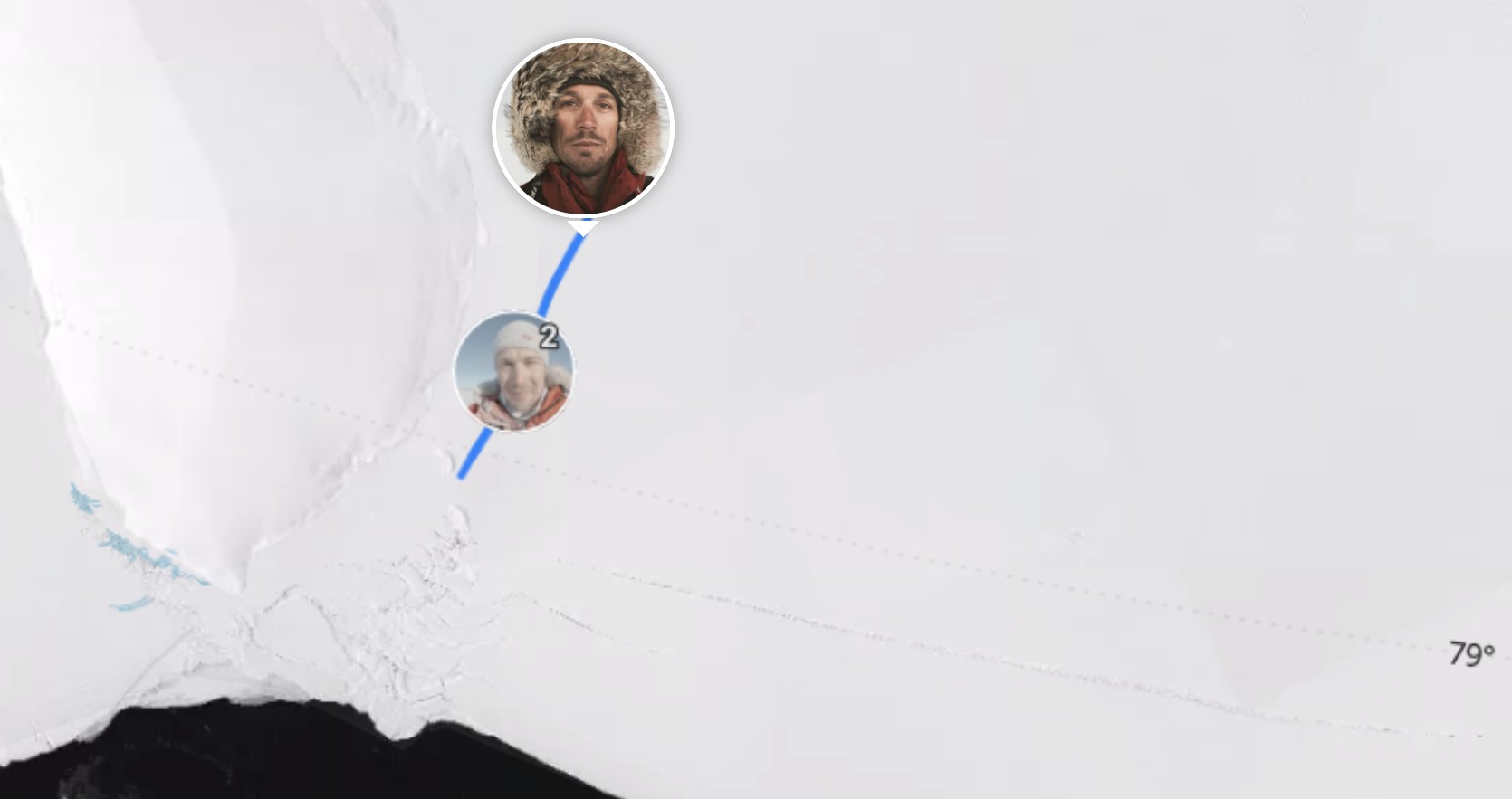
Colin O’Brady’s tracker shows his current position and his starting point, just north of 79 degrees on the Ross Ice Shelf in the Bay of Whales. Photo: Zero Six Zero, colinobrady.com
A small fraction, but…
Fifty kilometers is just a small fraction of what may be a 3,000km journey, but the fact that it may be the most difficult or dangerous part means that you cannot discount it. Some years ago, when adventurers attempted to ski the entire distance to the North Pole from Russia, the hardest part was always the first 20 or 30 kilometers, which featured a lot of open water.
Some chose to helicopter over that part, but the serious ones did not. When Borge Ousland and Mike Horn skied to the North Pole at night in 2006, it took them 17 days to escape those difficult first few kilometers. Due to their slow initial progress, they finished two days after the equinox; therefore, their expedition was not technically a full winter trip. But in choosing to confront the hardest few kilometers, they avoided any asterisks suggesting that their journey itself might be incomplete.
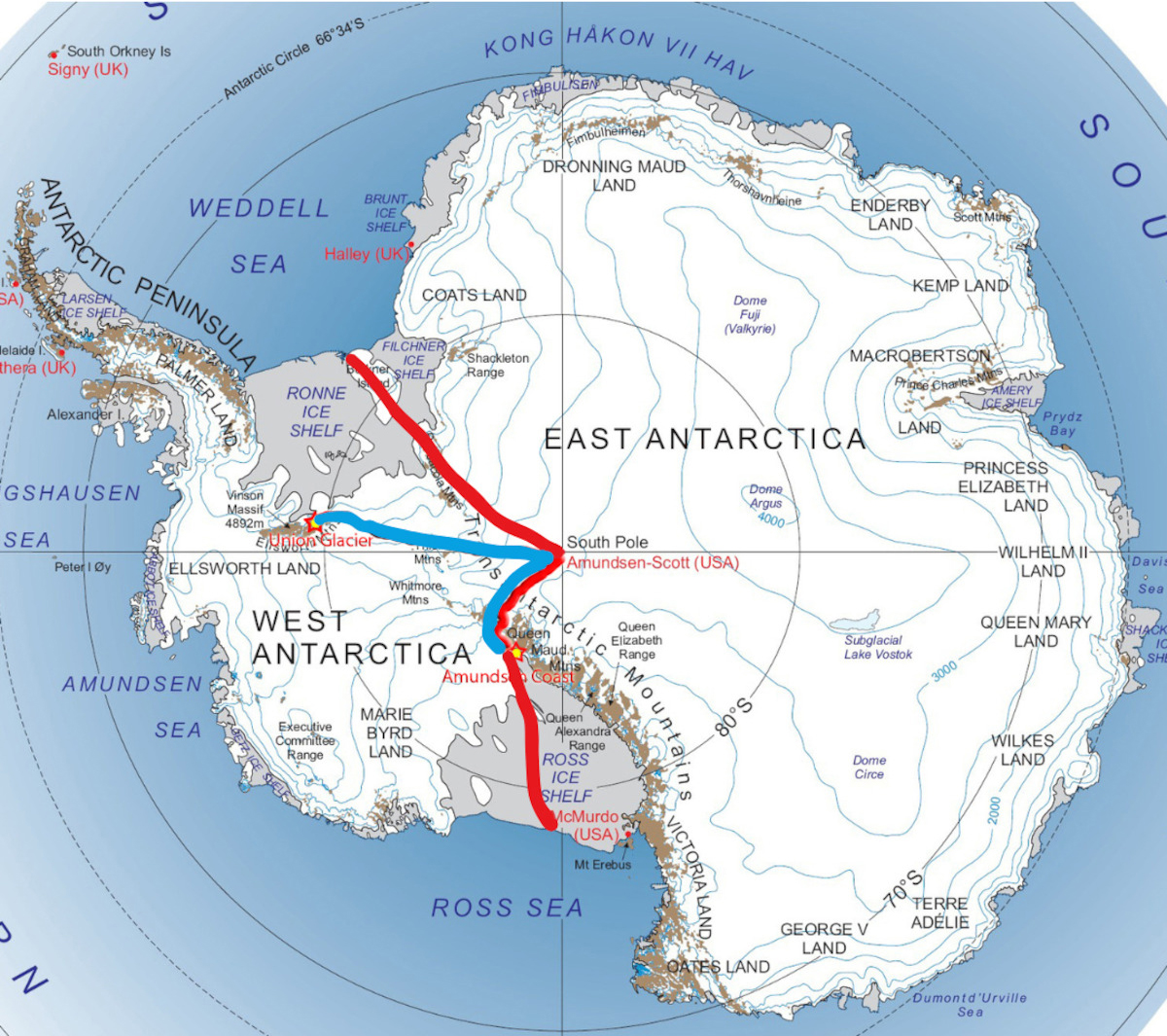
The red line marks O’Brady’s proposed route. Berkner Island is top left of the red line, Ross Ice Shelf is bottom right. The blue line shows the controversial adventurer’s 2018-19 truncated ‘crossing’ that avoided the ice shelves. Map: Netflix.com
For O’Brady, the going has been slow on the Ross Ice Shelf. On his social media updates, O’Brady reported “the loosest, deepest snow” he’s ever seen in Antarctica. With the soft, powdery surface preventing his 225kg sled from moving, he’s spent the last four days double-hauling — dragging half the load forward, then returning for the second half, thereby covering three kilometers for every kilometer of progress.

O’Brady on Day 4. Photo: Colin O’Brady
Three pairs progress
French explorer Matthieu Tordeur and glaciologist Dr. Heidi Sevestre are on a 4,000km kite-ski expedition, which primarily aims to collect scientific data. Facing contrary winds and hoping to start their work sooner, they took a vehicle from the Russian research station Novolazarevskaya to the Thorshammer ice slope.
From Thorshammer, the still-difficult headwinds forced them to zigzag and backtrack. Finally, they left the mountains, pushing westward in search of more favorable winds. They’re now 466km into the journey, averaging around 70km per day.
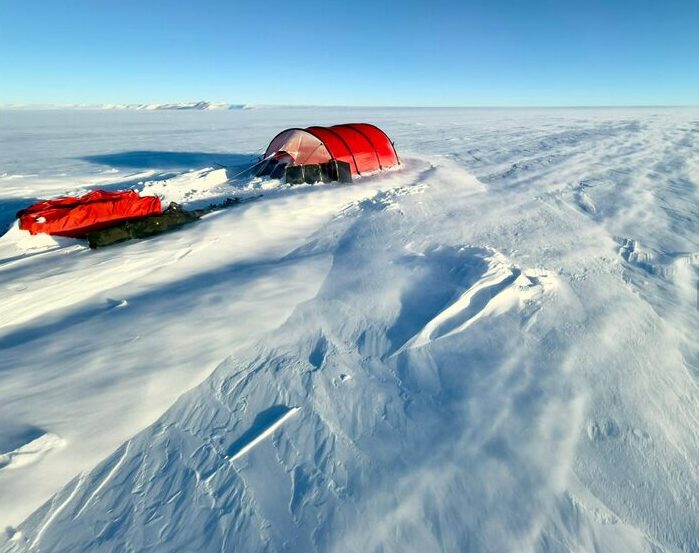
Tordeur and Sevestre set off from Thorshammer against contrary winds (coming from top right to bottom left in the photo). Photo: Under Antarctica
Meanwhile, Kathinka Gyllenhammar and her daughter Emma continue skiing to the South Pole. They left Union Glacier a week ago, reporting good weather. They’re now moving through the Ellsworth Mountains with 100kg sleds.
On the night of November 19, a sudden change of wind shook them awake and began to move even their heavy sleds. Nevertheless, they continue to make good progress.
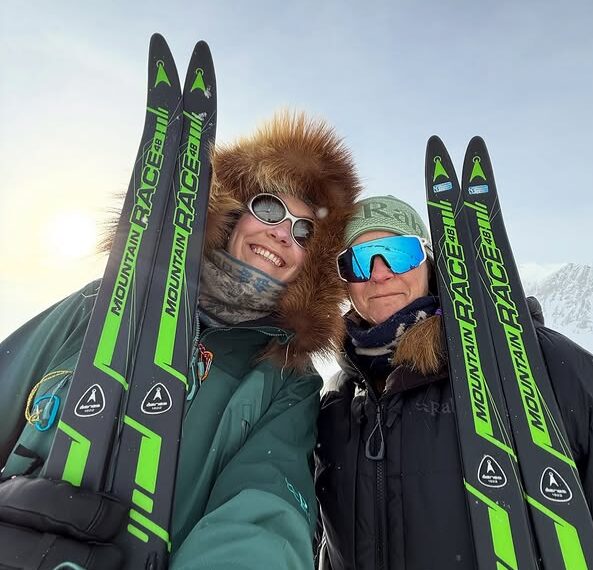
Kathinka and Emma Gyllenhammar In Antarctica. Photo: Kathinka Gyllenhammar
Polar veterans Lars Ebbesen and Roland Krueger are well into their short expedition from Wolf’s Fang runway in Queen Maud Land to the Norwegian Troll Research Station, 250km away.
They started slowly, on extremely dry snow, but they’re now making swifter progress. Roland needed a day off to recover from stomach problems, but has bounced back. They are both in high spirits, despite a small storm on November 18 with “completely hopeless conditions” that nearly blew away their tent. Their updates are filled with praise for the beauty of the mountain scenery, rarely visited by anyone but climbers.
Hercules Inlet
Meanwhile, four different expeditions this year are tackling the standard route from Hercules Inlet to the South Pole. (Some will head back again). Only one expedition is already underway.
Tom Hunt’s speed record try won’t start until December. Monet Izabeth is about to begin her attempt to become the first American woman to complete the route unsupported. Both Izabeth and Andrea Dorantes of Mexico, who’s attempting the same, are now at Union Glacier performing final checks on equipment.
Norwegian Sebastian Orskaug is skiing to the Pole and returning by ski-sail, while debuting his “Polar Rideshare” concept. Through his site, sponsors contract him to collect samples, take measurements, and so forth. Interested parties can also enjoy live updates on his progress, as well as biometric data. (He apparently has a resting heart rate of 62; hardly exceptional.) You can even check out his motivation level, currently displayed as a smiley face.
A week and 112km in, he’s left behind the worst of the sastrugi fields and is hoping to pick up speed. His current daily average will not be enough to reach the South Pole within his planned 45 days.

A Darth Vader-like Sebastian Orskaug near Hercules Inlet. Photo: Sebastian Orskaug
British adventurer Ian Hughes is the only one attempting the Messner route this year. After a week, he’s covered 124km. Although he reports intermittent poor visibility, things are overall proceeding apace.
